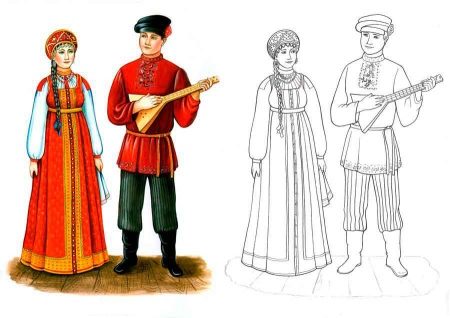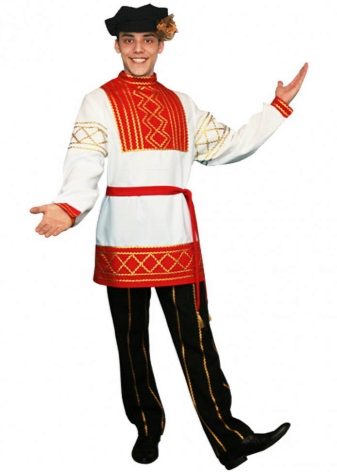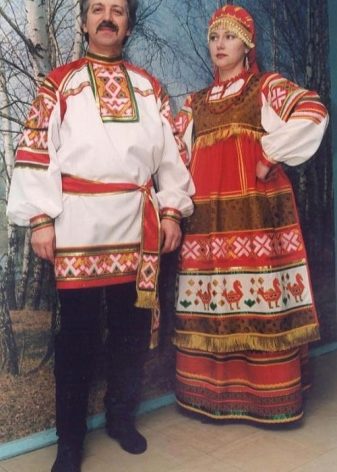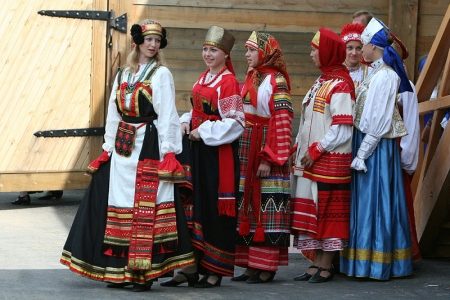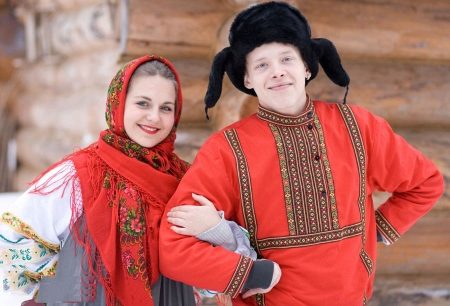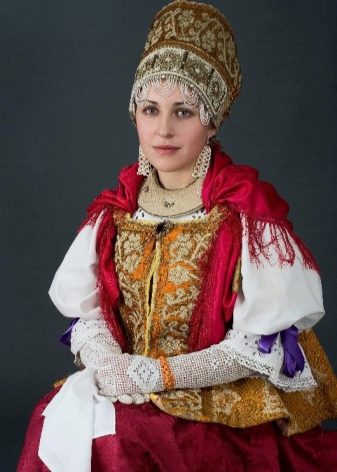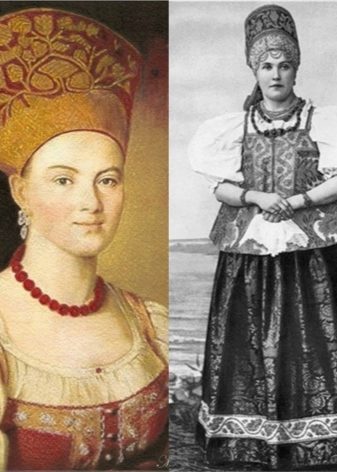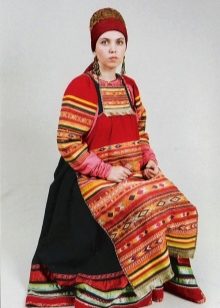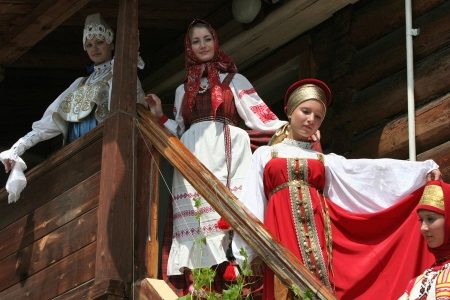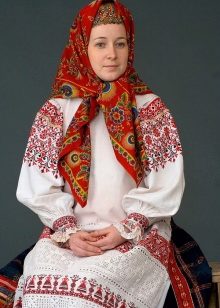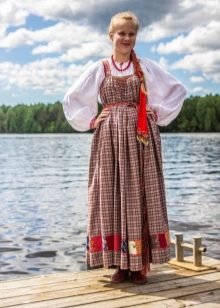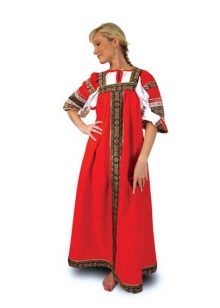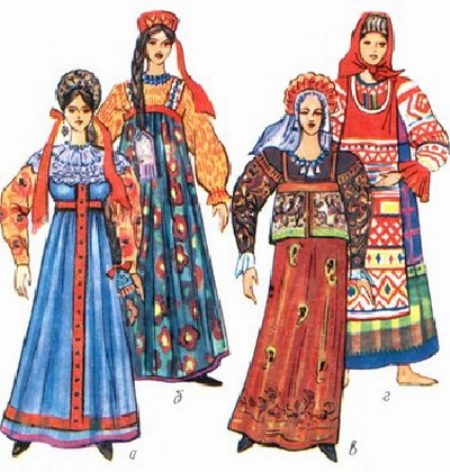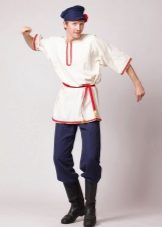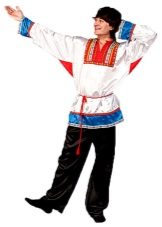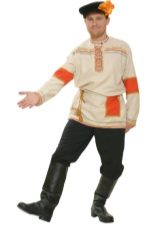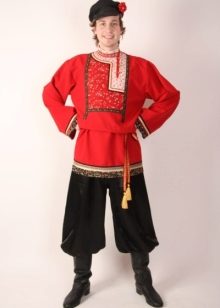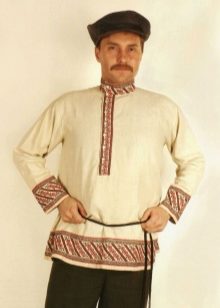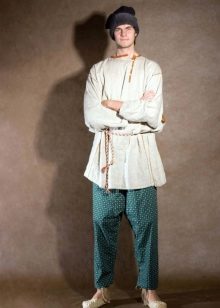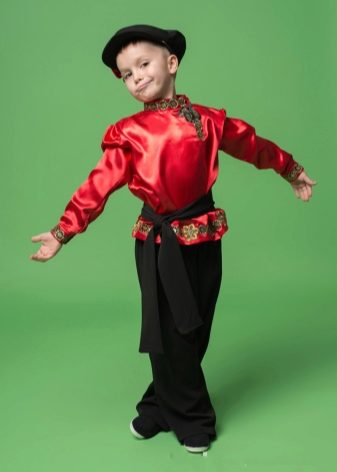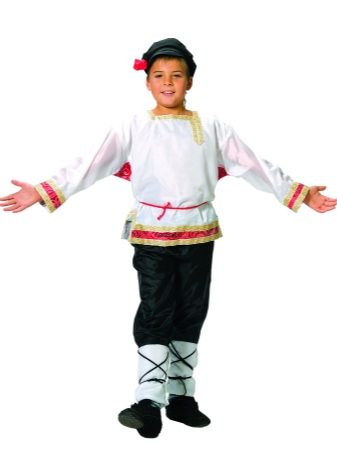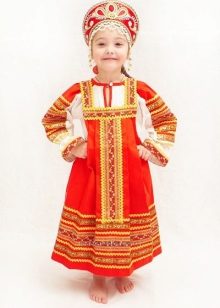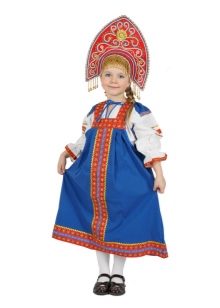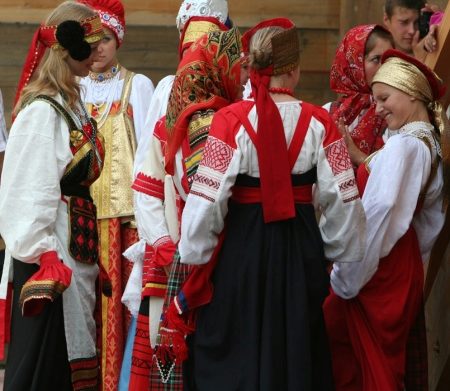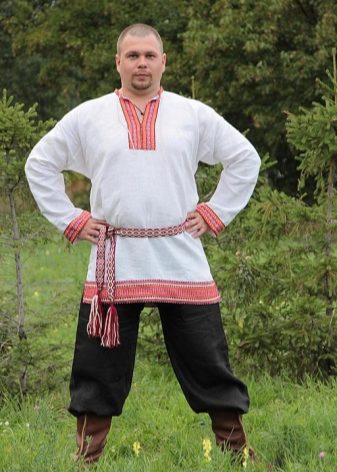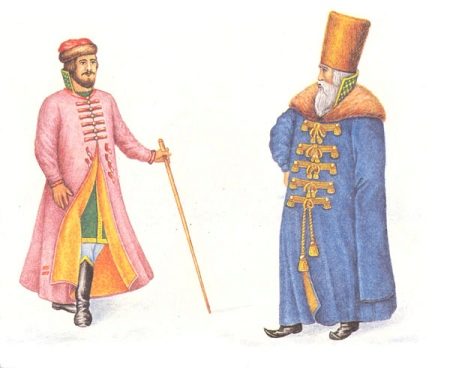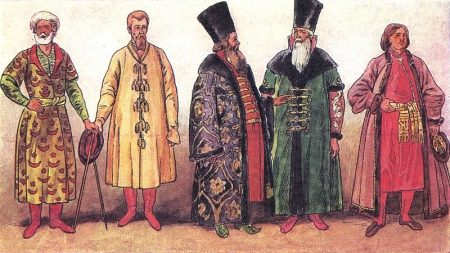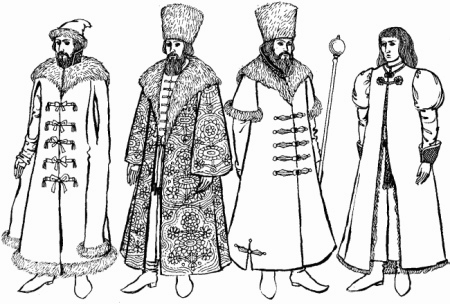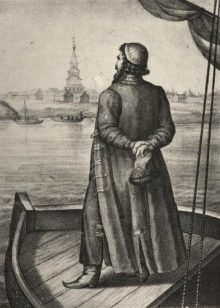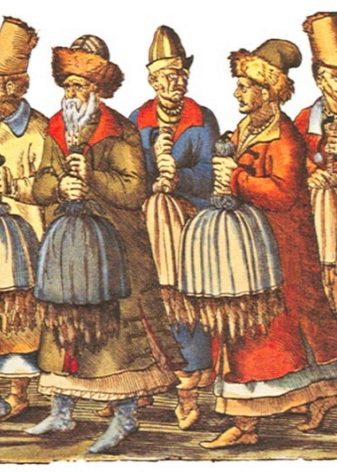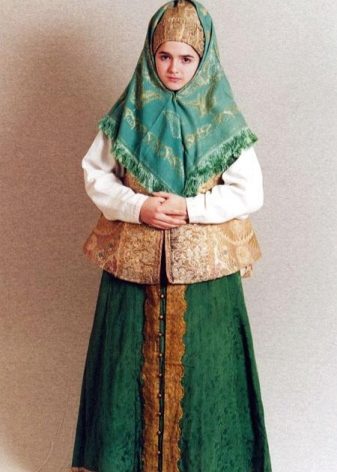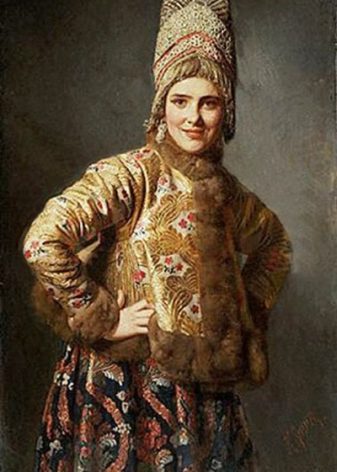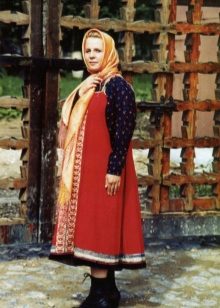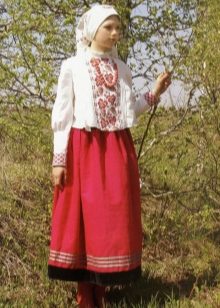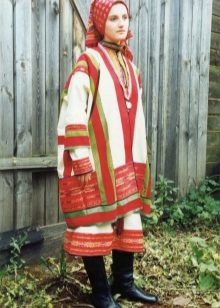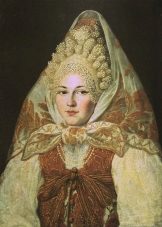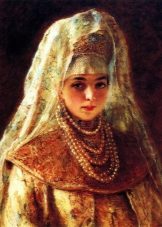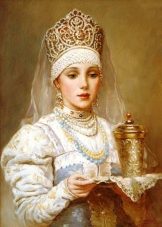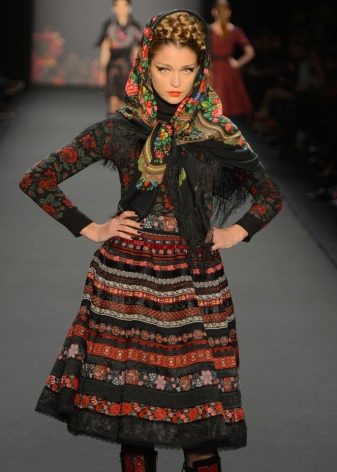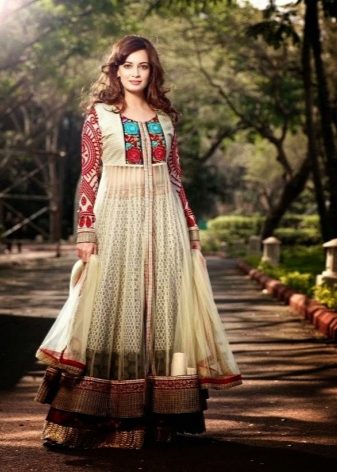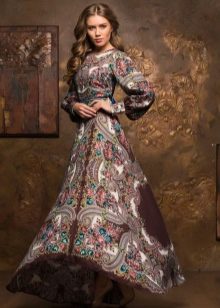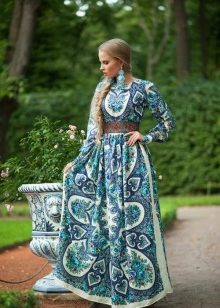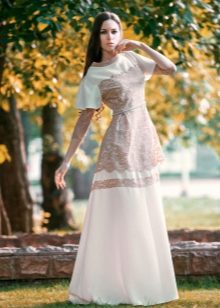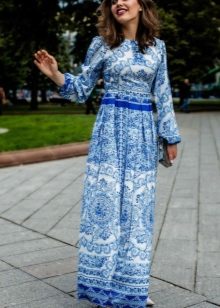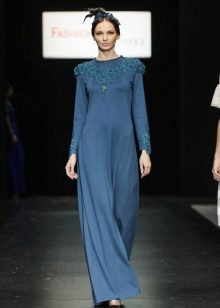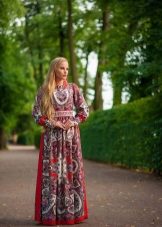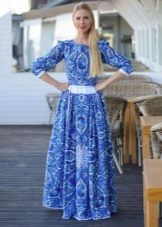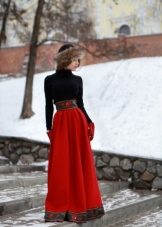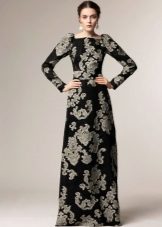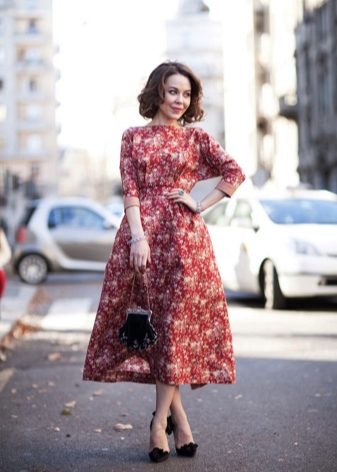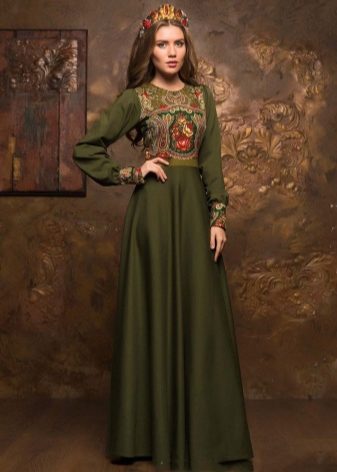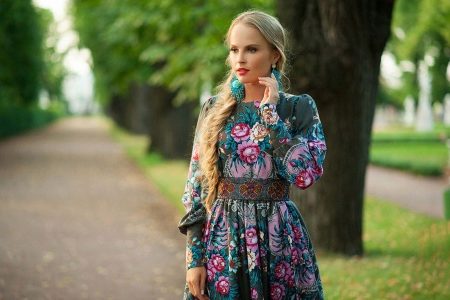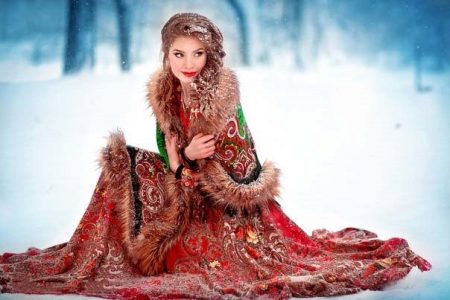Russian folk Russian costume

Russian national costumes are a combination of rich colors and a large number of details that create a full-fledged image. A few centuries ago, just by one suit, it was possible to understand from which province or village its carrier came. In addition, Russian craftsmen for each special event created dissimilar ceremonial outfits. You will learn about the history of the national costume and the details creating it in this article.
Peculiarities of the national costume
Russian traditional outfits are always divided into casual and festive. Our ancestors very clearly separated simpler clothes from coarse fabrics with a minimal amount of decorative elements, from more colorful outfits for special events. The most luxurious clothing was considered red.
Initially, in Russia, all the costumes were created by skillful female hands from dense homespun materials. This also made the outfits more special. The main materials for sewing apparel were cloth, linen and silk. The role of the lining was performed by kindyak, a special lining fabric.
The fabric base was supplemented with a large number of details, as well as accessories and shoes, which together formed a harmonious image.
These images differed significantly among themselves depending on the regions. So, for example, people from the northern regions of Russia dressed in more outerwear. She was both a swing and a cap, and in some cases, these two types of outfits combined. Cap-on clothing was worn over the head, while swinging buttons were fastened with buttons or hook fasteners.
Special attention is given to clothing for the nobility. She, of course, was more expensive and luxurious. Dresses for the nobility were embroidered with gold or silver threads, decorated with pearls and other decorative elements. Such an expensive outfit worn for more than one year. As a rule, it was passed from generation to generation, keeping it in proper form.
History of Russian costume
During its existence, the national Russian costume has remained virtually unchanged. The concept of fashion was less changeable than it is now, so the same style could be worn by several generations of the same family.
Less common outfits in traditional Russian style began in the early eighteenth century. Then the old Russian costume was banned by Peter the First, who wanted to make Russia more modern. Costumes in the Hungarian style, and later in German and French, replaced the national attire. In order to take root innovations, the ruler introduced a duty to carry traditional Russian dresses in the city.
Female
Dresses for women have always been more interesting and diverse than men. They represented the real examples of the art of talented Russian women. Since the time of Ancient Russia, women's costume consisted of a shirt (a simple shirt on the floor), a sundress and an apron. Often, another thick shirt was worn for additional warmth under a shirt.
Embroidery has always been an integral part of any traditional dress. In each province it differed in colors and patterns. Embroidery decorated hem and sleeves.
The dresses worn by women in Russia deserve attention. In the time of Ivan the Terrible, girls who dressed up in just one dress were considered obscene. It was customary to wear three dresses one on top of the other.This costume was very heavy and massive.
Male
For men from a simple class suits sewed practical and comfortable. Russian culture has always been inseparable from nature and the earth. This was displayed in simple peasant clothes, which were sewn from natural fabrics and decorated with floral patterns.
Men's suit consisted of a simple shirt, pants and belt. The head was covered with a felted sinner. Of the shoes, the most common were bast shoes. Light and comfortable, they protected the legs well while working in the field, but were not suitable for winter. With the arrival of cold weather, the traditional Russian costume was supplemented with felt boots, and on holidays - with leather boots.
For kids
Children in Ancient Russia wore simpler clothes. As a rule, these were simple loose shirts. For the children of the nobility, the outfits were created more refined. Sometimes they almost completely copied the adult costume. But young girls, unlike adult women, did not wear hats before marriage.
Features and value details
As already mentioned, the details in the national Russian costume played a very important role.
Details of a man's suit
The basis of the national men's suit was a simple shirt. In the clothes of simple peasants, she was the basis of the costume, while the nobility wore her as underwear. It was sewn of linen or silk. On the inside, the front and back of the shirt were complemented by a lining, which was called the underlay. Wide sleeves shirts tapered to the brush.
The appearance of the gate was different. It could be rounded, square or completely absent. If the collar was still, then it was supplemented with strings or buttons.
Also, the costume was complemented with such details as zipun, armchair and ohaben. All these things are varieties of caftans. A scroll, a casing or sermyag was put on over the shirt and the caftan. For more solemn occasions, a ceremonial cloak (basket) or single-piece woolen fabric was used.
Fur coats were also popular. Peasants wore simpler products made of thick sheepskin or rabbit fur. Representatives of the upper class allowed themselves to flaunt in dresses of silver fox, sable or marten.
In order to keep warm inside, the fur coats were fur sewn inside. Outside, they were covered with dense cloth. Dresses for the nobility were brocade or velvet. Luxury fur coat gave a wide fur collar.
Traditional fur coats in the Russian style were floor-length. The sleeves were also very long, and the arms were worn not only in them, but also in special slots located in the front. They were worn not only in winter, but also in summer, to create a solemn image.
Another important detail of the men's Russian costume is the headdress in the national style. There were several types of caps: tafia, cowl, murmolka and treuha.
Tafya was a small round cap that fits snugly to the head. Over it often put on a simple hat. Ordinary people chose options from felt, richer ones from velvet.
Murmolks were called hats, high and widening to the top. Gorlatnye caps were created according to a similar principle. Only they were further decorated with furs coming from the very throat. Lysis, sable or rabbit fur at the same time decorated the hat and warmed the head.
Details of women's costume
At the base of the women's national costume was also a shirt. It was decorated with embroidery or exquisite fringe. Notable Russian ladies on top of a simple lower shirt wore another maid, sewn of bright silk. The most elegant option is a scarlet maid shirt.
Over the shirts of the woman put on the years. An old outfit the length of the floor was created from silk and complemented by clasps at the very throat. Noble women wore an anniversary decorated with gold embroidery or pearls, and their necklace was decorated with a necklace.
A warmer alternative to an airshell in a national female costume was a fur coat.A long and fur-lined fur coat with decorative sleeves was a sign of luxury, since it was not particularly practical. The arms were either inserted into special slots under the sleeves, or into the sleeves themselves, which were rolled up for convenience. It was possible to warm the palms in the clutch, which was not only adorned with fur, but also sewn with fur from the inside.
An important role was played by such a detail of the costume as a headdress. All married women in Russia necessarily covered their hair, even being at home. In everyday life, the head was covered with a hair-hair or a warrior, tying a colorful flowered shawl from above.
Corollas looked more elegant (wide bandages, complemented by long colorful ribbons) that were worn in summer. In winter, they were replaced by fur hats. But the traditional Russian costume is still often associated here with the kokoshnik - an elegant headdress in the form of a vane. If possible, he was richly decorated and became the main addition to the dress.
National motifs in modern fashion or ethnic style
Although the traditional costume is now only part of the rich Russian history, many designers use its details to create modern outfits. Ethnic style is now in trend, so pay attention to such clothes is worth every fashionista.
Dresses in the Russian style should be restrained, because vulgarity, short skirts and too deep cleavage are simply inappropriate here. Chastity was one of the main values of our ancestors. The girls had to dress modestly and with restraint, without parading their bodies. Modern outfits in the Russian ethnic style are created on the same principle.
Dresses in Russian style are decorated with exquisite floral patterns, hand embroidery, lace or printed patterns. The hem and cuffs are decorated with fringe or elegant merezhka.
In the trend of natural fabrics and natural shades. Colors such as green, pistachio, red or beige look great. Sundresses can be, as long, in the traditional style, and shorter. However, choosing a dress of minimum length, be sure to complement your image with tight tights so that the image does not look too vulgar.
The length of the sleeves also varies. Cut the dress can also be different. Stylish look, as fitted outfits, and free. Dress with a flared skirt and high waist in no way loses the model of a shirt cut.
But to create a full-fledged image in the Russian folk style, dress alone is not enough. Like our ancestors, women often complement the dress with different accessories and outerwear. In combination with this dress look great bulk beads or earrings.
As a headdress, you can use an extravagant kokoshnik or a scarf embroidered with bright patterns. And over a dress to throw a vest or coat. In cool weather, do not deny yourself the pleasure to complement the image of a fur coat, clutch and warm fur hat.
Russian national costume is a part of our history and at the same time a real source of inspiration for modern designers.

